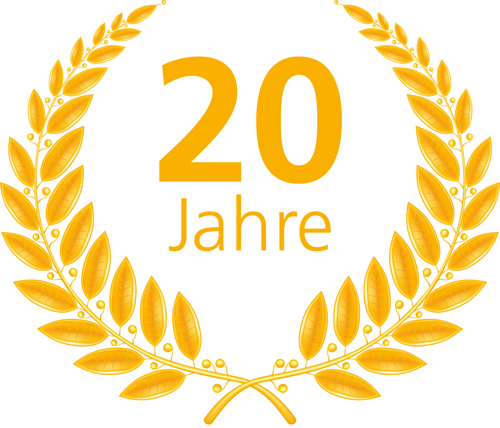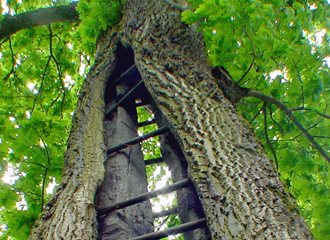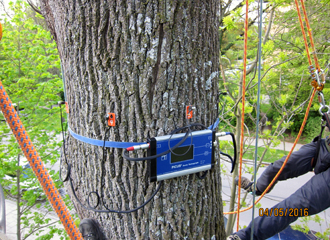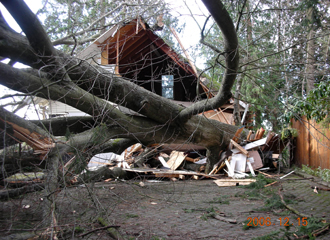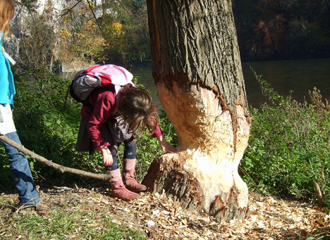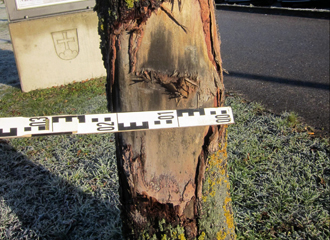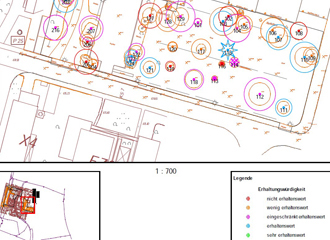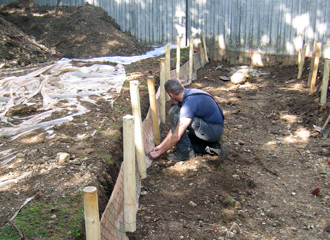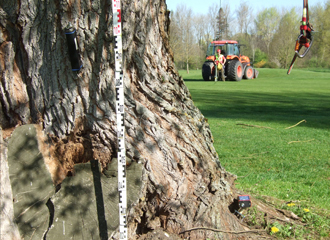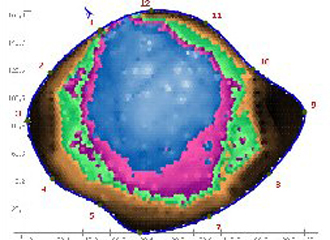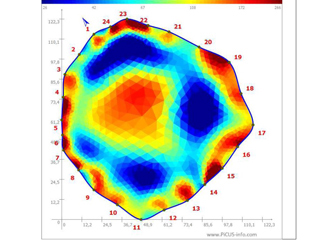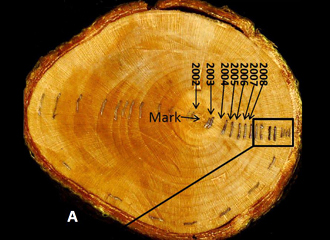Trees in adventure courses, tree installations
Trees in adventure courses, tree installations
“Any tree which is to serve as a platform for any type of element must undergo inspection by an arboricultural expert witness to determine the tree’s physiological and mechanical condition.” (EN 15 567-1). Brudi & Partners can provide sound, expert evaluations in the planning stages, carry out the required annual tree inspections, and certify the load-bearing capacities of the trees.
Brudi & Partners have provided numerous assessment reports covering installations in trees and are therefore fully conversant with the requirements and potential solutions in this sector. In cooperation with the European Ropes Courses Association European Ropes Courses Association (erca e.V.) we are also playing an active role in professional advancements in this field.

Planning and conception
Locations for ropes courses and adventure parks are not easy to find. The most important aspect is ensuring that they are easily reachable and located in the catchment area of people who would use them. The long-term success of these places, however, depends on the suitability of the tree population. The type of soil and vegetation, variety of tree species and size classes, as well as previous damage and the extent of pests or disease present are all factors which dictate whether a ropes course project will be feasible and sustainably economical without causing any long-term damage to the environment.
The load exerted by the installation has to be matched by a tree of a certain diameter. Heights and locations of trees are important when considering the risk of wind throw. Expert knowledge of trees can provide the crucial basis for decision-making when planning a ropes course; it can also help to keep discussions objective and to ensure acceptance during the authorization process.
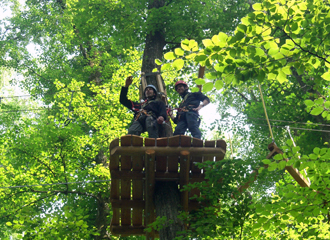
Tree inspections
Naturally, there are high safety requirements for rope courses and adventure parks. Regular inspections by qualified experts are therefore essential. Any changes which could adversely affect the trees supporting the platforms, fresh indications of trunk defects, and any risks located in the crown must be recorded reliably and remedied. Brudi & Partners contribute to the safety of rope courses by carrying out thorough inspections and by giving advice on safety measures.
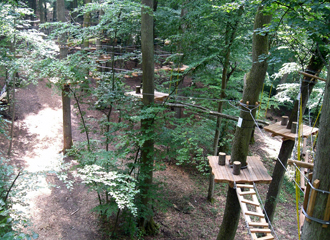
Assessment of load-bearing capacity
The forces to which trees in rope courses are subjected are much less than those caused by the wind. Nevertheless, the load-bearing capacity of the trees supporting the installation has to be documented by an expert tree assessor. Wherever doubts exist, there are ways of evaluating a tree’s load-bearing structure according to engineering principles. The tree’s species and, above all, the trunk diameter and the heights of the anchor points are the decisive factors here.
From their many years of experience and the research they have conducted, Brudi & Partners can estimate how trees will behave in a fall arrest scenario on the basis of reasonable load assessments. This makes it possible to safeguard installations without the need for any exaggerated measures.
Ancient trees and species protection
Ancient trees and species protection
One very special field of work for anyone involved in arboriculture concerns very old trees, and ancient trees that originated long before we did. These trees often provide habitats for many now rare species. Young trees can also provide an important habitat for other organisms; however, habitat and veteran trees are to be given priority according to nature conservation regulations that distinguish between the preservation of “general” and “special” species. Legal requirements determine how they are to be maintained.

Management planning for ancient trees
Very old trees have different biomechanical and biological characteristics to young and medium-aged trees. Their trunks and branches are often hollowed out and only subsegments of them tend to still function. Frequently, they are the remnants of a bygone cultural landscape and can be several centuries old.
For beetle fauna in particular, these trees are essential, since their longevity provides generation upon generation with an irreplaceable habitat. Certain of these highly specialized and therefore rare species of beetle have recently attracted public attention (e.g. the hermit beetle).
In the spirit of nature conservation laws, we endeavor to preserve irreplaceable ancient and other valuable old trees.
We draft long-term management plans that take not only the tree but also its surroundings into account. This may involve tree maintenance measures, such as retrenchment pruning, to support the tree’s aging process and prevent it from dying off prematurely, for example due to static failure.
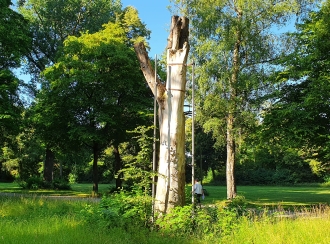
Securing important habitat trees in the long term with carbon exoskeletons
When centuries-old trees have to be removed for reasons of safety, but important species occurrences, such as the hermit (Osmoderma eremita), are to be preserved, this often presents the parties involved with great challenges. With the help of a new technology, however, important habitat trees can now be preserved safely for years to come.
An exoskeleton made of the high-performance material carbon has meanwhile been installed in several pilot projects and is already supporting several trees and tree trunks that were no longer stable in order to preserve them as habitats in the long term. This process uses upcycled carbon obtained from waste materials generated by the use of wind energy. The filigree, but heavy-duty carbon poles safe the trees without significant aesthetic impairment of the tree environment. At the end of their service life, the components used can be dismantled without leaving any residue and may be reused for further trees at other locations.
Together with the project partners Dr. M. Heine, F. Weißgerber of iii-carbon and R. Dettenrieder, Brudi & Partner has developed and tested the use of carbon exoskeletons in recent years. We provide expert reports, plan sufficiently dimensioned exoskeletons and support the tendering process as well as the work on site.
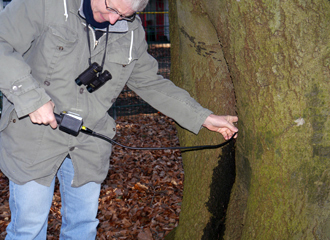
Inspections in accordance with species conservation regulations
The role of a tree as a habitat also has increasing significance for the authorization of smaller construction projects and land-use plans. Often this affects individual trees in urban areas, which are the hosts of particularly or highly protected species as denoted in §44 of the German Federal Law on Nature Conservation.
Inspections conducted early on, e.g. a year before the planned clearing of the land, can identify relevant habitats. Continuous ecological functionality measures (CEF) can be carried out in advance, or it may be possible to avoid interfering with the tree’s residents altogether. Our expert arborists can climb into even the hard-to-reach parts of a tree to determine where habitats exist and to inspect them. We provide the corresponding legal assessment report or statement, with recommendations for avoidance or replacement measures. Complex issues can be clarified by the species experts in the network of professionals that Brudi & Partners collaborate with.
